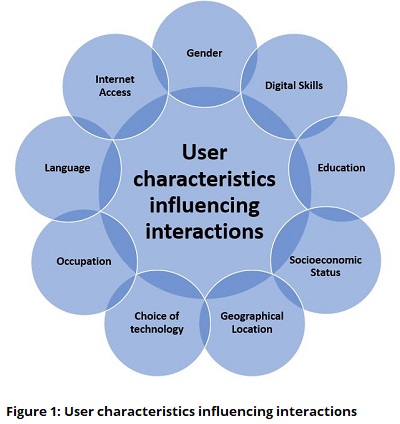Balancing audience diversity and health information resource design
A blog post written by Amanda Adams, PhD Candidate, College of Nursing and Health Sciences, Research Centre for Palliative Care, Death, and Dying, Flinders University
Designing a website or App interface is more than just organising images and text randomly on a page, there is both a science and an art to doing this successfully. Engaging end-users requires that interfaces be both functional and visually pleasing, and if developers can get the balance right, increases the chances that our audiences will find, use, and understand the information presented. Design requires thought and consideration of which layout, content, images, menu structures and visual cues can be used to ultimately guide and assist visitors to be able to complete whatever the task or activity that they came to do.
For example, just think about your last interaction online. Was the information easy to find, could you find your way around, did all the buttons and links take you where you thought you might go and importantly, was it a gratifying experience in that you were able to do what you went to the website or App to do?
If you said yes to all of these questions, then the developers got the design right for you.
Developers attempt to match design, function, and visual appeal to their intended audience. But how users experience this information within the interface is distinct to each individual, that is, even within specific user groups there is inherent diversity between each person which makes us unique. This is also true for audiences of health information resources. Each visitor brings their own level of content knowledge, technological skills or abilities, and attitudes towards using or engaging with digital environment. With this diversity comes an unequal ability to find, use and understand health information. A significant proportion of users are digitally excluded where there is a deficit in use of information technology or devices and the ability to self-determine trustworthiness of the information, known as digital readiness. [1-3]
Researchers suggest levels of digital readiness are underpinned by each individual’s characteristics such as demographics, social constructs, both current and past lived experiences, and cultural backgrounds (Figure 1). If digital readiness can impact how each user interacts with health information, then there are real implications for development and e valuation processes that should involve representatives of the intended audience. For developers, questions then become: ‘Who is now the ‘representative’ user for a general information resource’, and aspiringly ‘How can you ensure that everyone - regardless of levels of digital health literacy, digital skills and access; can use the interfaces that you design?’
valuation processes that should involve representatives of the intended audience. For developers, questions then become: ‘Who is now the ‘representative’ user for a general information resource’, and aspiringly ‘How can you ensure that everyone - regardless of levels of digital health literacy, digital skills and access; can use the interfaces that you design?’
For online health information resources such as CareSearch, audience diversity is a reality and a complex issue to resolve when it comes to building and maintaining a crucial health resource for the general population. Palliative care information is not specific to any one demographic, segment, or profession and this can make interface design difficult when trying to cater for everyone (and everyone’s individual characteristics). Developers can undertake usability evaluations to ensure that our prototypes meet user needs, but time and budget constraints means number of people we can involve and rounds of testing we can do are often limited.
Through our research, we have begun to understand that perhaps there needs to be a change in development practice to ensure that we are balancing our interface designs to help everyone to access health information. There may also be a need for a more strategic method to identify who should be involved in usability testing. To investigate this question, our current study explores how digital health literacy and user characteristics influence end-user’s use of health websites and how this may affect interface design.
Can you help with our research study?
To help us better understand usability we would like to invite you to complete an online survey and activity exploring the relationship between characteristics that influence our ability to interact with the online environment and how online health information resources are designed.
Your responses will remain anonymous and no identifying information will be requested.
If you are interested in participating, you can click on the link below for more information and to take the survey. The survey and activity will take you approximately 30 minutes to complete, and once finished you can enter the draw for a $50 gift voucher in appreciation for your time.
Link to survey: Digital Health Literacy and Website Design Survey
If you have any questions regarding the research study, please contact the researcher:
Amanda Adams [amanda.adams@flinders.edu.au]
References
- OECD. Understanding the Digital Divide. OECD Digital Economy Papers No. 49. Paris: OECD Publishing; 2001.
- Internet World Stats. The Digital Divide, ICT, and Broadband Internet [Internet]. Internet World Stats; 2020 [updated 2020 Jun 7; cited 2020 Aug 12].
- Horrigan JB. Digital Readiness Gaps [Internet]. Washington DC: Pew Research Centre; 2016 Sep 20.

Amanda Adams, PhD Candidate, College of Nursing and Health Sciences, Research Centre for Palliative Care, Death, and Dying, Flinders University